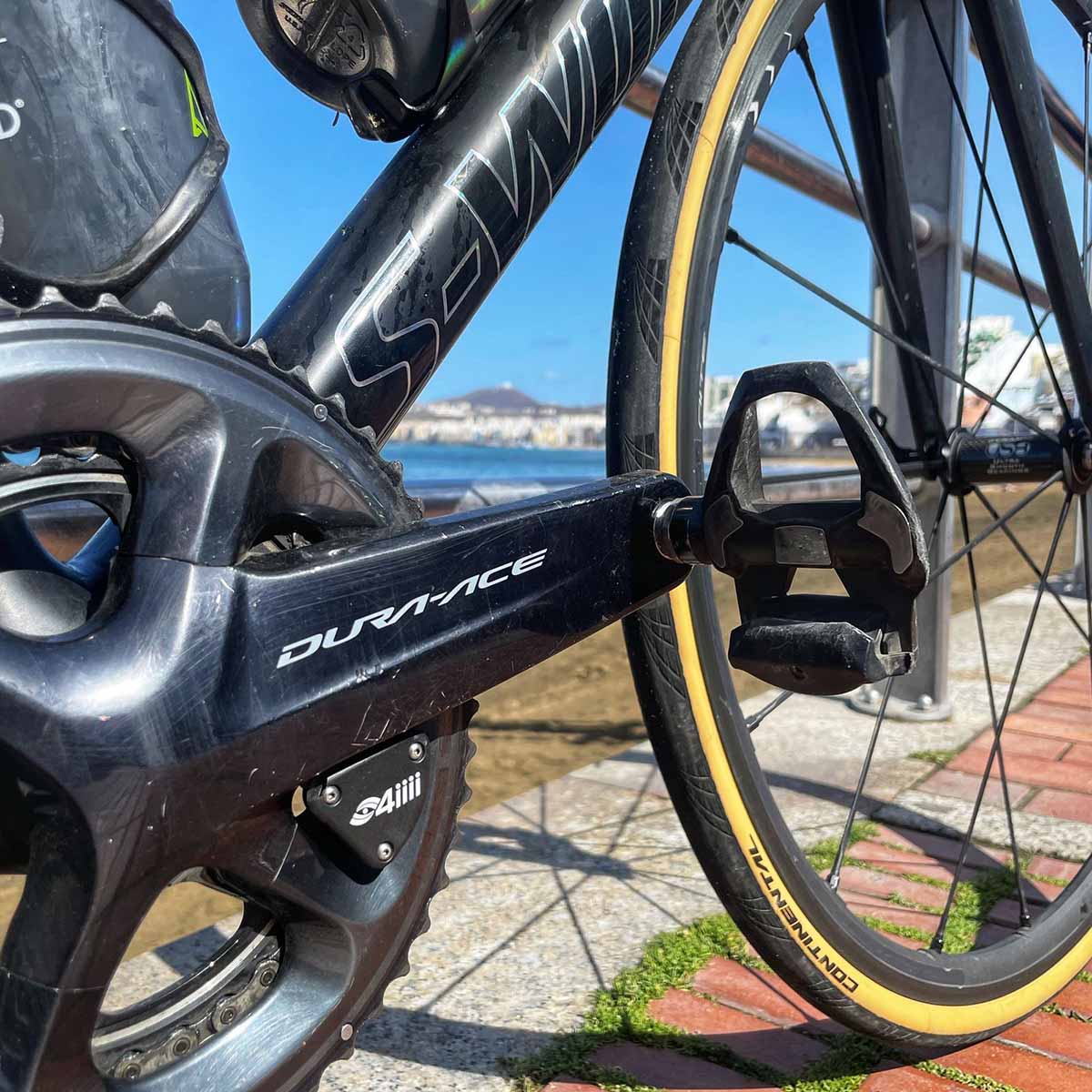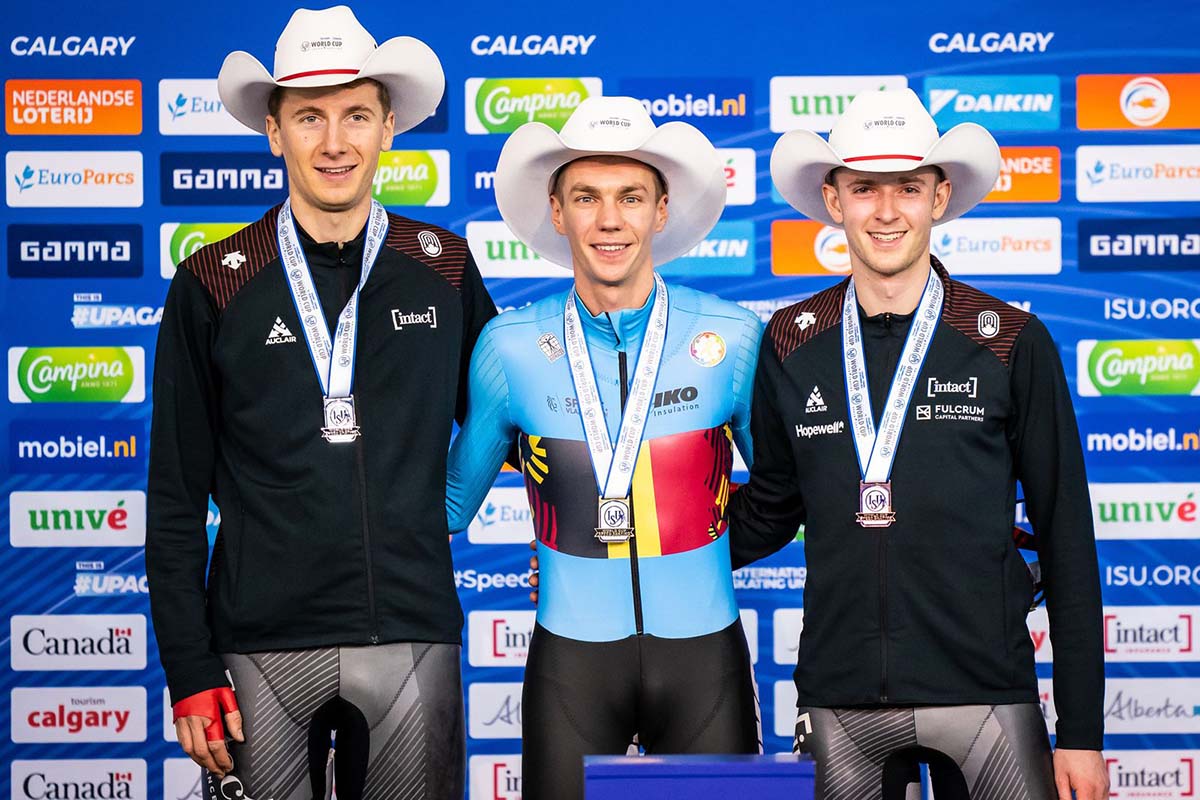Ice & Asphalt
Posted by Andrew Davidson on February 17, 2023
From Eric Heiden’s transition from the World’s greatest speed skater to founding member of the legendary 7-11 American cycling team and Tour de France racer to Clara Hughes becoming the first person to win multiple medals at the summer and winter Olympics, speed skating and cycling have a storied history together. With arguably the best all-around rider and skater in the world right now, baring the same surname (with no relation), five-time cyclo-cross world champion, Mathieu Van Der Poel and reigning 5,000m and 10,000m world and Olympic speed skating champion, Nils Van der Poel, the sporting overlap is almost poetic. While Mathieu is sticking to pedaling, in post-Winter Olympic interviews, Nils detailed an off-season cycling regimen that would rival or eclipse several of the best professional riders currently racing and had WorldTour teams inquiring about his services.
With 4iiii located just outside of Calgary, Alberta, host of the 1988 Winter Olympic Games and home of the Olympic Oval, one of the fastest speed skating venues in the world, it’s not unusual to see the names of past, current and future skating stars atop local Strava segments and race results. We were fortunate enough to catch up with one such talent, Canadian skater Hayden Mayeur (age 25), to discuss the intersection of ice and asphalt and how he applies his passion for cycling to support his ascent on the international skating stage.
Can you give us a description of your speed skating bio to date?
Like many Canadian kids, I started in hockey but ended up switching sports when I joined the Toronto Speed Skating Club’s “learn to speed skate program” at the age of 14.
Following my high school graduation I moved to Calgary to join the Olympic Oval’s short track speed skating team and the following year moved over to the long track speed skating program. In 2018 I was named to the Canadian National Development Program, where I continued to grow and work toward a series of “firsts” and results that soon came:
- First career ISU international medal (BRONZE) in the Mass Start in Tomaszów Mazowiecki, Poland at a U23 World Cup 2018/2019 season
- First career Canadian National Title (GOLD) in the Mass Start 2019/2020 season
- First career ISU Championship team event medal (GOLD) in the Team Pursuit 4 Continents Championships in Milwaukee, USA 2019/2020
- First career ISU Championship individual medal (SILVER) in the Mass Start 4 Continents Championships in Calgary, CAN 2021/2022
- First career World Cup team event medal (SILVER) in the Team Pursuit World Cup #3 in Calgary, CAN 2022/2023
- First career World Cup individual medal (BRONZE) in the Mass Start World Cup #4 in Calgary, CAN 2022/2023
- OLYMPIC Alternate in the Mass Start / 2022 Olympic Winter Games

Hayden claiming his first individual World Cup medal (bronze) in the Mass Start World Cup #4 in Calgary, CAN 2022/2023
What’s your history with cycling?
I began road racing in Ontario at the age of 15. I still remember my first road race as it was Good Friday 2013. From day one, I was hooked and raced countless Ontario Cup level races as a youth and into my junior years. Following my move to Alberta in 2015, I continued racing until it was no longer viable alongside my skating career. I was thankful for the opportunity to compete alongside some of the top U23 cyclists in the country at the 2017 Canada Summer Games in Winnipeg but aside from the odd race here or there, this was my last competitive road season. I do, however, when it suits my training program, slip into a race here or there even to date. I still really enjoy crit racing as it mirrors a lot of the fast-action, high-intensity we get on the ice.
What are some of the speed skating goals and ambitions you have for yourself?
My goals on the ice continue to change as I advance in my career. I remember as a young skater with the Toronto Speed Skating Club, my goal was to skate well enough to be accepted into a development centre for the sport, be it Calgary or Montreal at the time as I was a short track speed skater. Once that goal was achieved, it was a question of how to make the national team, then how to qualify for an international competition. Then this season, 22/23, I accomplished a career goal of representing Canada as a staple on the World Cup circuit as well as having earned my first team and individual medals. My eyes, however, throughout all these career checkpoints, have always been set, ultimately, on one thing. I want to represent Canada at the Winter Olympic Games, in this case, we are talking about Italy 2026. This was a dream as a kid starting off in the sport, but it’s now a reachable goal and I will continue to put the work in day in and day out until I get there.
Speed skating and cycling have a significant overlap, with a lot of great examples in Canada alone (Clara Hughes, Vincent D’Haitre, etc), how do you find they complement each other?
Cycling has forever been one of the primary forms of training for speed skating. Yes, speed skating is a very technical sport, but at the end of the day, it also requires a tremendous level of strength and endurance to be the best. One of the most efficient ways to target primary muscle groups for the sport, when not on the ice, is on the bike. Not only can we spend the spring and summer months building up our endurance base on long rides out into the countryside, but with power data, we’re able to target all of our specific zones that we need to build on to improve as skaters. One of the reasons you see skaters crossing over into cycling and the other way around is because let’s face it, both sports are brutally leg dominant. Whilst speed skating is a weight bearing sport, there is more strain on all the small muscles being used to stabilize and extend/contract the legs through strides, at the end of the day, the primary muscle groups are still the same.
How do you use the bike to prepare yourself for your skating goals (off-season miles, pre-race warm-ups / cool-downs, etc)?
I would say I hop on my bike almost as many times as I may lace up my skates throughout a season. From April through to the end of the summer, you’ll find me doing everything from endurance rides to build an aerobic base, all the way to interval training on the velodrome here in Calgary. The work we put in off the ice is as important as the work we put in on the ice. At the end of the day, I wouldn’t be where I am today had I not worked through many of the long hours I’ve put in on the saddle. At first, you may wonder what it’s all for, but when you’re fighting through those last laps of your skating race and manage to hold onto those lap times or sprint through strong to the finish, you look back and realize that it’s all thanks to the drylands, strength, or cycling that we completed leading to that point. From experience, I can tell you that the more volume you manage to squeeze in throughout the summer months, the stronger you’re going to be able to finish off the competitive season in March which is where it matters the most at World Championships.
How does experience racing a bike factor into your racing as a skater, in a mental/tactical sense?
I look back at my cycling career and thank it for so much that it’s given me. Having started racing when I was young, I credit cycling to much of the endurance I built up prior to moving into the national training centre. For me, I was just having fun racing bikes but as a byproduct, my body was developing an endurance base that I would eventually be able to benefit from as a speed skater. It allowed me to come into long track speed skating as a distance-focused skater without needing to do any “catching up” in my training so to speak. To add, being one of Canada’s mass start skaters, a pack racing event for placement, I do genuinely feel like I gained a lot of my pack comfort from racing criteriums and such. I have always been a racer, and that’s translated onto the ice for me.
You have power data on your bike(s), how do you make use of it in your training?
Power data started to become critical in our training right as I was first entering into the national program in 2017. To keep things short and sweet, we gauge our cycling training pretty well off power data. Several times a year we run a variety of tests in the lab at the Sport Institute as well as on the road. These bike tests leave the team physiologists with individualized thresholds for each athlete to be able to follow throughout their training. Heart rate data, of course, is still used, but there are more variables to your heart rate on a day to day basis than there are to power which allows us to be more consistent when targeting training zones.
What are some examples of bike intervals that you would do in training?
One of the more common interval programs you would see someone such as myself doing as a middle/long distance athlete is what we refer to as our “8 minute” program. This generally consists of a 15 minute warmup, then 3x8 minute (AnT) intervals with 8 minute rest between each and 1x8 minute Vo2 Max before cooling down for 15 minutes and hopping off the bike. We have a number of additional interval programs we do throughout the year on the bike but for me, this is one I respond very well to when we look at the return it brings me on ice.

Keeping training rides consistent and accurate with the use of a dual-sided 4iiii PRECISION Powermeter.
What kind of on bike warm-up would you do prior to a skating race to prepare (time/ efforts/rough wattage and/or cadence)?
Warmups are something very personalized to an athlete. I spent a number of years playing around with different methods of doing so before reaching my current protocol that I’ve been using for the past several seasons. Following a 15 minute dynamic warmup, I hop on the bike for an 8-minute progressive depending on the distance I am preparing to race. This usually means I will spend about 4 minutes getting the legs spinning around 200w, then will progress to 250w-260w for 3 minutes, and up to 320w for the last 1 minute. It’s nothing too crazy but it helps me get my heart pumping and the blood flowing in my legs to then suit up and head to the line for the start of my race.
Thanks for sharing your unique perspective and insights on the skating/cycling dynamic and best of luck with your season Hayden! You can follow his progress on and off the ice at @hayden_mayeur.



